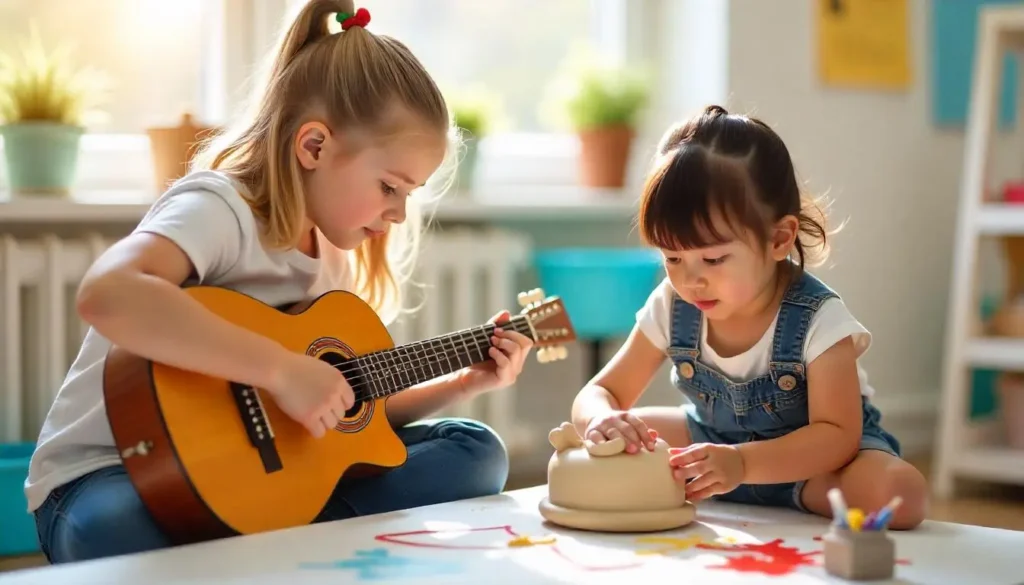Can Art or Music Therapy Help Children on the Autism Spectrum?
Yes. Art therapy for Autism is especially effective for children who struggle to express thoughts and emotions verbally. By drawing, painting, or sculpting, children can symbolically communicate internal experiences.
Therapeutic goals of art therapy may include:
✅ Improving fine motor skills and coordination
✅ Facilitating emotional expression through art
✅ Enhancing social interaction during group projects
✅ Supporting receptive language by following visual instructions
✅ Increasing confidence and reducing emotional outbursts
This form of Autism Spectrum Therapy is deeply aligned with developmental and emotional needs, especially for children who process the world visually.
Is Art or Music Therapy Effective for Nonverbal Children With Autism?
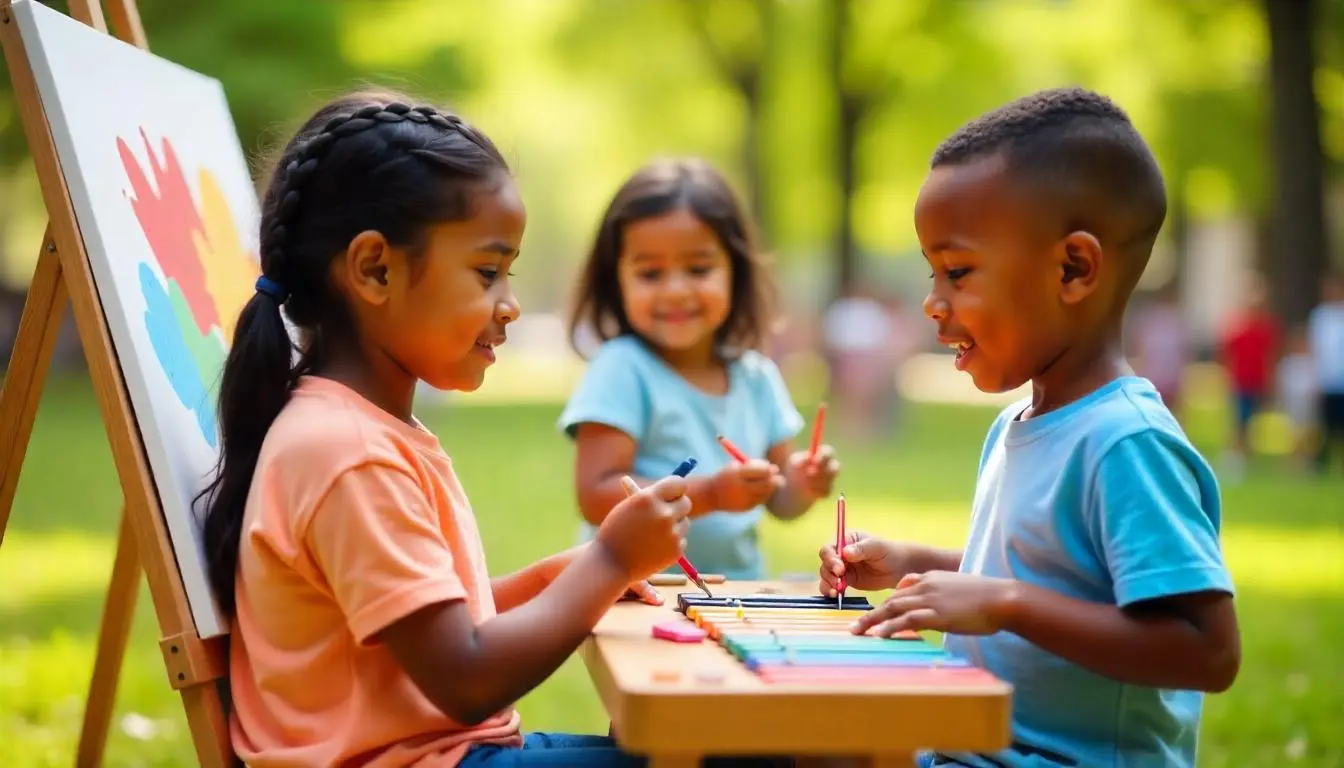
Absolutely. For nonverbal or minimally verbal children, art and music therapy offer essential alternative means of communication. A child may not speak, but can choose colors to reflect emotions or use drumbeats to express moods.
These methods help nonverbal children:
- Communicate wants, needs, and emotions
- Participate in shared experiences
- Build pathways for future verbal or augmented communication
- Engage in sensory integration therapy safely and positively
Creative therapies are uniquely suited for unlocking the expressive potential of children whose words may be limited but whose ideas and emotions are not.
Also Read: Top 7 Therapeutic Activities for Children with Autism
How Do Creative Therapies Support Emotional Regulation in Children on the Autism Spectrum?
Many children on the Autism Spectrum experience heightened emotional reactivity and difficulty in self-soothing. Art and music therapy offer calming, structured environments that help children identify, express, and manage emotions.
Here’s how:
- Music therapy provides rhythmic patterns that calm and focus the nervous system
- Art therapy allows for safe exploration of intense emotions using colors and textures
- Repetitive creative actions like coloring or drumming can reduce stress
- Group therapy can promote emotional modeling and social empathy
These therapeutic approaches, when applied consistently, build long-term self-regulation skills that support the child’s entire developmental journey.
What Are the Best Art or Music Therapy Activities for Children With Autism?
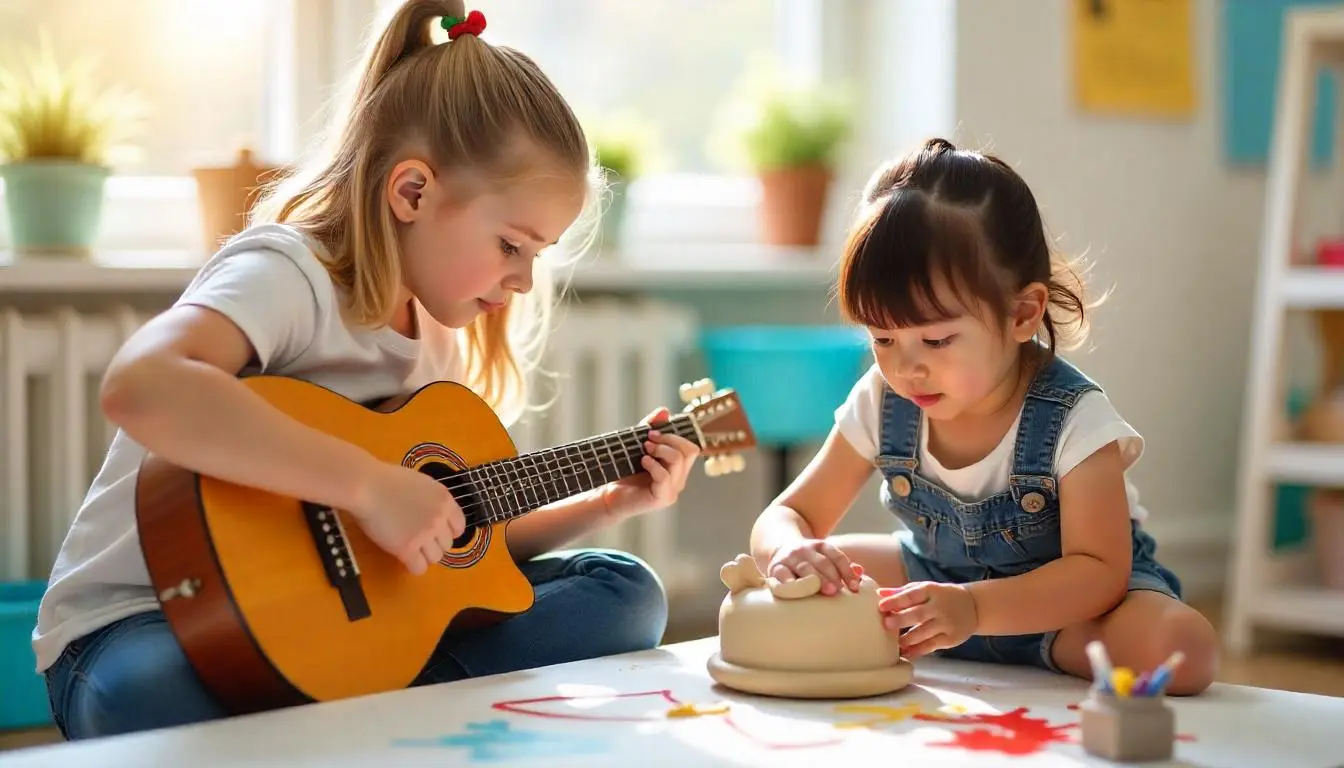
The best activities in therapy for children with Autism are those that align with their sensory preferences and developmental levels. Here are a few effective and commonly used options:
Art Therapy Activities:
- Finger painting and tactile art
- Mandala coloring for focus and calm
- Clay modeling and sculpting
- Visual storytelling through comics or illustrated books
Music Therapy Activities:
- Singing simple, rhythmic songs
- Playing drums, shakers, or xylophones
- Movement games set to music
- Sound and rhythm imitation tasks
These activities support therapeutic play for Autism, encouraging engagement, sensory exploration, and social participation which are all vital components of ASD Therapy approaches.
Can Art and Music Therapy Be Used Alongside ABA Therapy for Better Results?
Yes. In fact, integrating Art and Music therapy with ABA therapy can significantly enhance outcomes. At AB Spectrum, we advocate for combining evidence-based Behavioral Therapy for Autism with creative modalities.
The advantages include:
- Boosting motivation during structured ABA sessions
- Reducing therapy fatigue and increasing joy
- Allowing new skills learned in ABA to generalize into creative expression
- Supporting emotional and sensory needs that ABA may not directly address
Creative therapy doesn’t replace ABA; it enriches it, creating a more complete and compassionate treatment experience.
Also Read: Is ABA Therapy Harmful or Helpful for Kids with Autism?
Are Art and Music Therapists Trained to Work With Children on the Autism Spectrum?

Yes. Certified art and music therapists are specially trained to work with neurodiverse populations, including children on the spectrum. They are familiar with:
- Core autism characteristics and comorbid conditions
- Techniques that support communication, behavior, and sensory needs
- Integrating their practice with broader Autism Support services
- Creating safe, welcoming environments for all children
At AB Spectrum, we only partner with licensed professionals who understand the nuances of working with autistic children, ensuring therapy is tailored, respectful, and impactful.
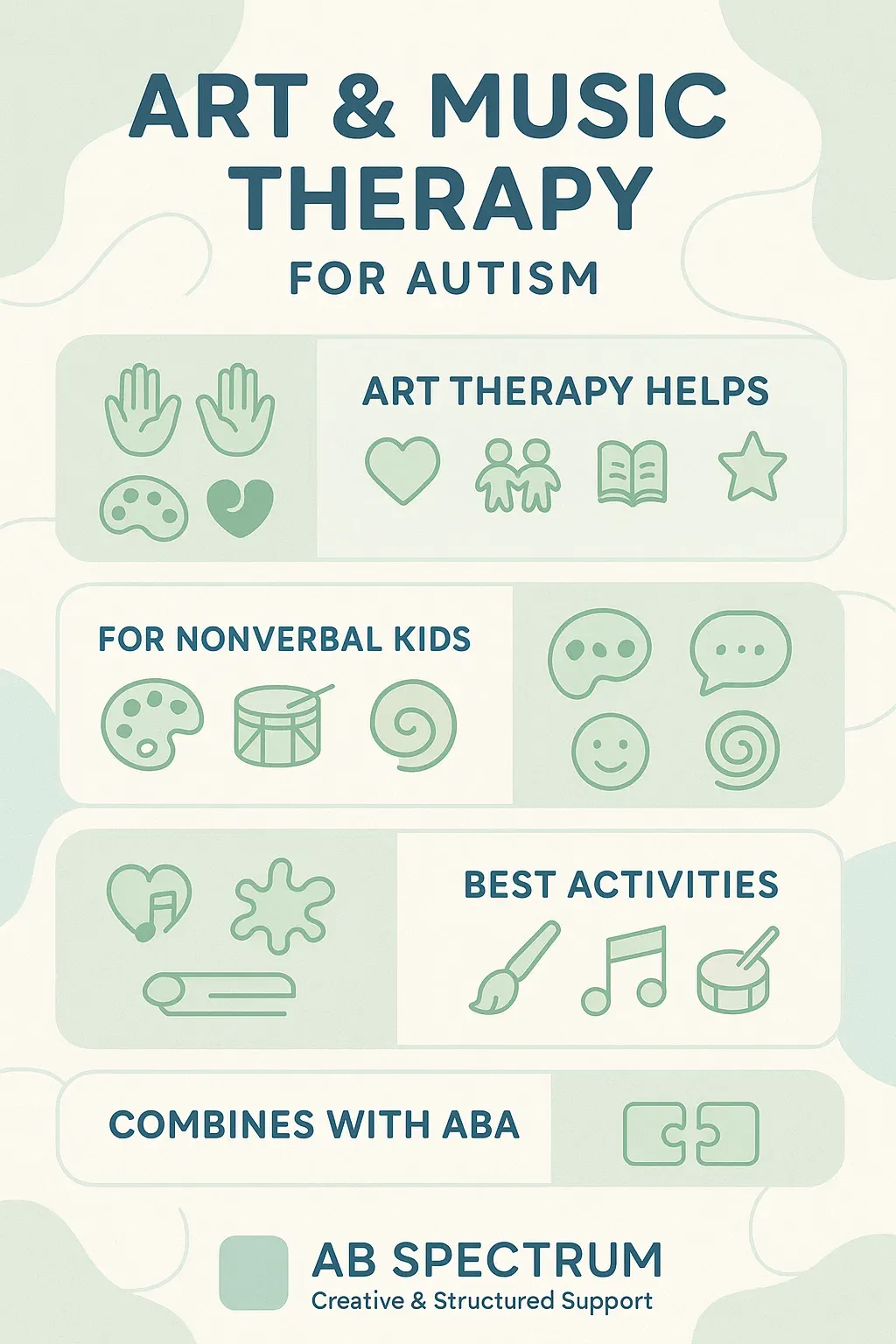
Conclusion
Art and Music Therapy for Autism opens up new avenues for children to express themselves, regulate emotions, and build meaningful connections. Whether a child is nonverbal, hypersensitive, or simply needs a creative outlet, these therapies offer powerful support.
When combined with structured therapies like ABA, creative interventions form part of a well-rounded, holistic autism therapy model. Through visual and auditory expression, children don’t just learn,they heal, grow, and thrive.
At AB Spectrum, we are committed to providing comprehensive, individualized care that meets every child where they are helping them become who they are meant to be.
FAQs
1. What Age Is Appropriate for Starting Music or Art Therapy for Autism?
Children as young as 2 or 3 years old can begin creative therapies under the guidance of a trained therapist.
2. How Long Are Typical Art or Music Therapy Sessions?
Sessions usually last 30 to 60 minutes and may be conducted weekly or more frequently depending on the child’s needs.
3. Is Parent Involvement Encouraged During Creative Therapy?
Yes, many therapists involve parents either through observation or co-participation to reinforce strategies at home.
4. Can Art and Music Therapy Be Covered by Insurance?
Some insurance plans may cover it under therapeutic services. Check with your provider or contact AB Spectrum for guidance.
5. What’s the Difference Between Recreational Art and Therapeutic Art?
Therapeutic art is guided by goals, assessments, and interventions by certified therapists, whereas recreational art is purely expressive.
6. Are Online or Virtual Sessions Available?
Yes, many therapists offer teletherapy options, though hands-on benefits may vary compared to in-person sessions.
7. What Should I Look for in an Art or Music Therapist for My Child?
Ensure they are board-certified, experienced with ASD, and collaborate well with other care providers.
8. How Soon Can We Expect to See Results?
Results vary, but many families notice improvements in behavior, mood, and communication within 8–12 weeks of consistent therapy.
Our Latest Blog

What is Natural Environment Teaching and Why It Works for Autism
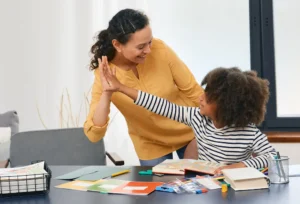
How Verbal Behavior Therapy Helps Children with Autism Communicate Better
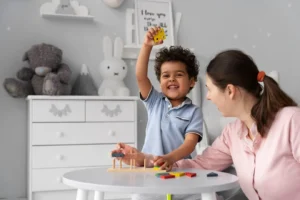
The Power of Play: How Play Therapy Helps Children with Autism
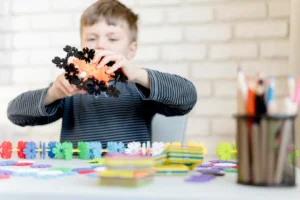
Why Social Skills Training Matters for Children on the Autism Spectrum
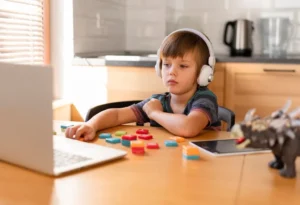
What Is Sensory Integration Therapy And How Does It Help Children with Autism?


